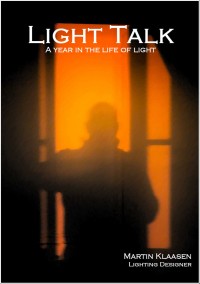The week that was October 5-9
Singapore, weekend 10-11th October 2015
Monday 5th October, Muscat, Oman – New Horizons, new relationships
I find myself waking up in the Grand Hyatt in Muscat after having arrived last night from Singapore. A new project, and new horizons for me as it is my first time in Oman. Our project is actually a hotel resort in Salalah, another 1-2 hours flying further south but the kick-off meeting for us is held in the architect’s office just across the road from our hotel. I attach great importance to these kick-off meetings where you meet the client and the project team for a first time. This is where you can set the tone and cement the basis for a successful partnership in a project. First impressions are crucial in life and hence we generally come out well prepared with the aim to put the client and the team at ease that they made a good decision in appointing us. It is important to set the tone for this new relationship right from the start, explaining what they can expect from us in terms of deliverables, agreeing on time schedules and showing our capabilities and expertise through a presentation in which we share our first thoughts in regards to the lighting design concept for this project. While you may argue the usefulness of a 3 day trip for a 3 hour meeting, nothing in my opinion beats a first face to face meeting with the team you are going to work with over the next 1-2 years or so. Judging by the reactions we are off to a great start and we are looking forward to working with this team.
We made use of our time in Muscat to do a bit of reconnaissance by visiting some of the top hotels at the end of the day. Always good to get up to speed with the local standards and see what has been done before you! We visited the Shangri-la, the Ritz-Carlton and The Chedi, who are supposed to be the trending top hotels. With our own Grand Hyatt experience we came away with renewed energy to work on this project. Specifically The Chedi was relevant and inspirational. See pictures below.
Tuesday 6th October, Muscat-Dubai-Singapore – Travel time and solar developments
Today was a full day of travelling hopping on an very early morning flight to Dubai for our transit to Singapore. It is generally not the most productive time as a lot goes in the transiting, waiting, checking-in, security clearance, immigration, lounging, and so on. Trying to work or read on the plane is not as efficient, though the fact that you can’t be disturbed by emails or calls does help to focus. Though even that is gradually becoming a thing of the past with internet-WiFi and calls now possible on many flights. I still dutifully switch everything off enjoying my me-time, reading up on things, writing my minutes or reports or just simply clearing some other stuff from my to-do list. During the 3-hour transit in Dubai I had managed to work through my emails and clear out some pressing issues and down loading some stuff for during the flight. As this was a daytime flight I mostly worked, interrupted by supplies of coffee and food.
Besides clearing my work back log I also got to read up about another “clearing” matter. Some researchers have now managed to develop a clear glass solar panel and while that seems an oxymoron (glass is supposed to let light through, not absorb it!) it somehow works. To my understanding they integrated crystals in the glass that “diverts” parts of the light, most particularly the non-visible light waves such as infrared and ultraviolet, to the edge of the glass panel where “strip size solar cells” capture the light and transforms it into solar energy. While the efficiency of this technology is yet to be proven, it seems to have a great potential and further move us to a world of rechargeable energy.
Wednesday 7th October, Singapore – Fire alarm
By far the most unique lighting experience as a lighting designer happened in our Palace Hotel project in Perth today. As part of the interior design concept we have refitted some original heritage statuettes depicting a man holding a flame with new hand-blown glass to re-introduce the actual flame experience. The amazing thing that happened that when the flame lights were switched on the fire alarm went off! Thinking it was a coincidence the lights and fore alarm were switched of and our lights switched on again, but the same thing happened…the fire alarm went off again. While there is obviously an electrical coincidence at work, it was quite comical that our artificial fire light would trigger the fire alarm…just shows you how realistic our designs are! One for the history books!… PS: The flames are photo-shopped into the picture as I don’t have the site photo yet
Thursday 8th October, Singapore – LED binning and budgets
One of the key issues in our design process is the selection of the light fittings and with that the definition of the quality of the LED technology. Centre to this is the colour quality of the LED lighting and the binning quality relating to the production process. Time and again we are faced with on-site discoveries of colour inconsistencies due to colour temperature variations and time and again we scratch our heads on how that managed to scrape through again. In one of our projects this became glaringly obvious when LED linear lights that are used to backlight a fabric white stretch ceiling clearly showed colour differences throughout the large surface. While we did specify the colour temperature and the binning tolerance, the contractor had to value engineer the whole ceiling and may have taken some short cuts in the process. With the installation now completed and the stretched ceiling installed, the impact only becomes visible. While we offered different causes to the client like different electrical supply to some of the panels, varying dimming signals possibly causing different outputs, potential internal reflections and material differences in quality, the most likely cause from our observation is that we are dealing with different batches of LED’s. while we can’t really change the lighting at this point in time as the ceiling is all sealed up, we do have a lesson learned for the future in educating the client about the risks of “cheaper” (low binning tolerance) LED selections. With reference to the MacAdam ellipses who define steps within the CIE 1931 colour diagram in regards to colour consistency, a 1-step MacAdam ellips defines a zone of 2 degrees colour space within which the human eye cannot see a colour difference. As a guideline David MAcAdam listed the visual sensitivities to colour differences, which I think we should use in educating our client about the potential inconsistencies that can be encountered in our finished projects.
This is his findings for a typical CCT of 3000K: 1-step: +/- 30K; 2-step: +/- 60K; 4-step: +/- 100K; 7-8-step: +/- 175K. It is obvious from these steps that LED binning from 4 to 8 steps create CCT differences of up to 175K either way! For good colour consistency 1 or perhaps 2 steps can be recommended, some applications even up to 4, but anything above should be avoided! Below site and measurements we made; up to 300K difference!
Friday 9th October, Singapore – Maintenance hoops
Today I went to see a client with a big auditorium that is in need of refurbishment. Always good to take stock of the site before you actually come up with a fee proposal I went “on location” to assess the current state and the work required to bring it up to standards and desired lighting performances and effects. Since the theatre had catwalks up in the ceiling I went up (always up for a bit of exercise J) and had a good look into the ceiling and existing lighting. Besides the fact (not to my surprise) that I saw a ceiling cove with fluorescent lights pretty much condemned and useless, I did find a pulley system for the maintenance of the lights. All down lights were actually hung above the ceiling and could be pulled up for lamp replacement and then lowered back above the ceiling hole. This “vintage” installation was developed to avoid having to service the ghts (mostly PAR56 and high wattage CFL’s) from the ground (about 10-12m up) making use of the catwalk system that was there anyhow. I remember these installations from 20 years ago when it was quite common but I have never applied this in my own designs for a very long time! It looks pretty amateurish and not surprisingly many of the lights I saw were not really hang centred let alone vertically! There is definitely work to do here…let’s see if I can entice this client with an attractive fee proposal, looks like a neat little challenge project!
Have a great weekend
The week that was



















 The long awaited book compilation of Martin's first year of blogging is available. Order now.
The long awaited book compilation of Martin's first year of blogging is available. Order now. Feedspot Top 100 Lighting Blogs
Feedspot Top 100 Lighting Blogs